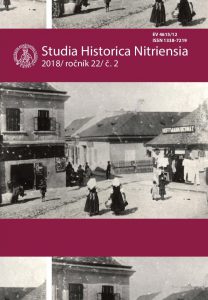Město Řím a jeho památky očima dvou českých pozdně renesančních šlechticů
The City of Rome and Its Monuments Through the Eyes of Two Late Renaissance Czech Noblemen
Author(s): Markéta MelounováSubject(s): Cultural history, Architecture, Local History / Microhistory, Czech Literature, 16th Century, 17th Century
Published by: Univerzita Konštantína Filozofa v Nitre, Filozofická fakulta
Keywords: Friedrich of Donin; Christopher Harant of Polzice and Bezdruzice; Old Bohemian Travelogue; Rome; Topography of Ancient Rome;
Summary/Abstract: The paper analyzes and compares the methods and accuracy of the descriptions of ancient Roman monuments in two important Old Bohemian travelogues from the beginning of the 17th century: the Pilgrimage of Christopher Harant of Polzice and Bezdruzice (1564 – 1621; travelogue printed in 1608) and the travelogue of Friedrich of Donin (ca. 1574 – 1634; travelogue preserved in a single manuscript). Both travelogues are richly illustrated; they describe both specific monuments of the city of Rome at the turn of the 16th and 17th centuries as well as the types of monuments not all of which are of Roman origin, but can also be found in Rome (such as obelisks and pyramids). In his account, Donin prefers to provide general information about the monuments rather than to describe his own journey. However, due to the missing page, we do not know the exact beginning of his description. The descriptions are chronological: first, he depicts the monuments of pagan Rome; second, Christian churches and basilicas; and, finally, the secular buildings of Christian Rome. The preserved part of the account of Roman pagan monuments starts topographically with the Vespasianic Templum Pacis and the Palatine hill; nevertheless, while speaking of imperial arches, Donin abandons the method and describes instead the most important monuments according to their type. The arches are followed by the Flavian amphitheatre, the Theatre of Marcellus, Roman baths, the Pyramid of Cestius, the obelisks of Rome, the columns of Trajan and Marcus Aurelius (incorrectly identified with the column of Antoninus Pius), and the mausoleum of Hadrian. Donin is well versed in architecture, his concise descriptions of monuments are mostly accurate (although not always). Contrary to Harant who labels most building stones as “marble”, Donin distinguishes between different kinds of building stones (marble, travertine, porphyry). The lack of autopsy in Harant’s descriptions is sometimes obvious, not only in verbal descriptions (the curious information that Titus’ triumphal carriage in the relief of Titus’ arch is drawn by two unicorns), but also in illustrations (the Egyptian pyramids resembling obelisks). On the other hand, Harant’s travelogue is much more extensive and elaborate, whereas the greatest difference between him and Donin when it comes to the information processing method is Harant’s ubiquitous bibliographical citations and the lack of these in Donin’s work (except in case of literal quotes from Latin or Italian poets).
Journal: Studia Historica Nitriensia
- Issue Year: 22/2018
- Issue No: 2
- Page Range: 317-334
- Page Count: 18
- Language: Czech

